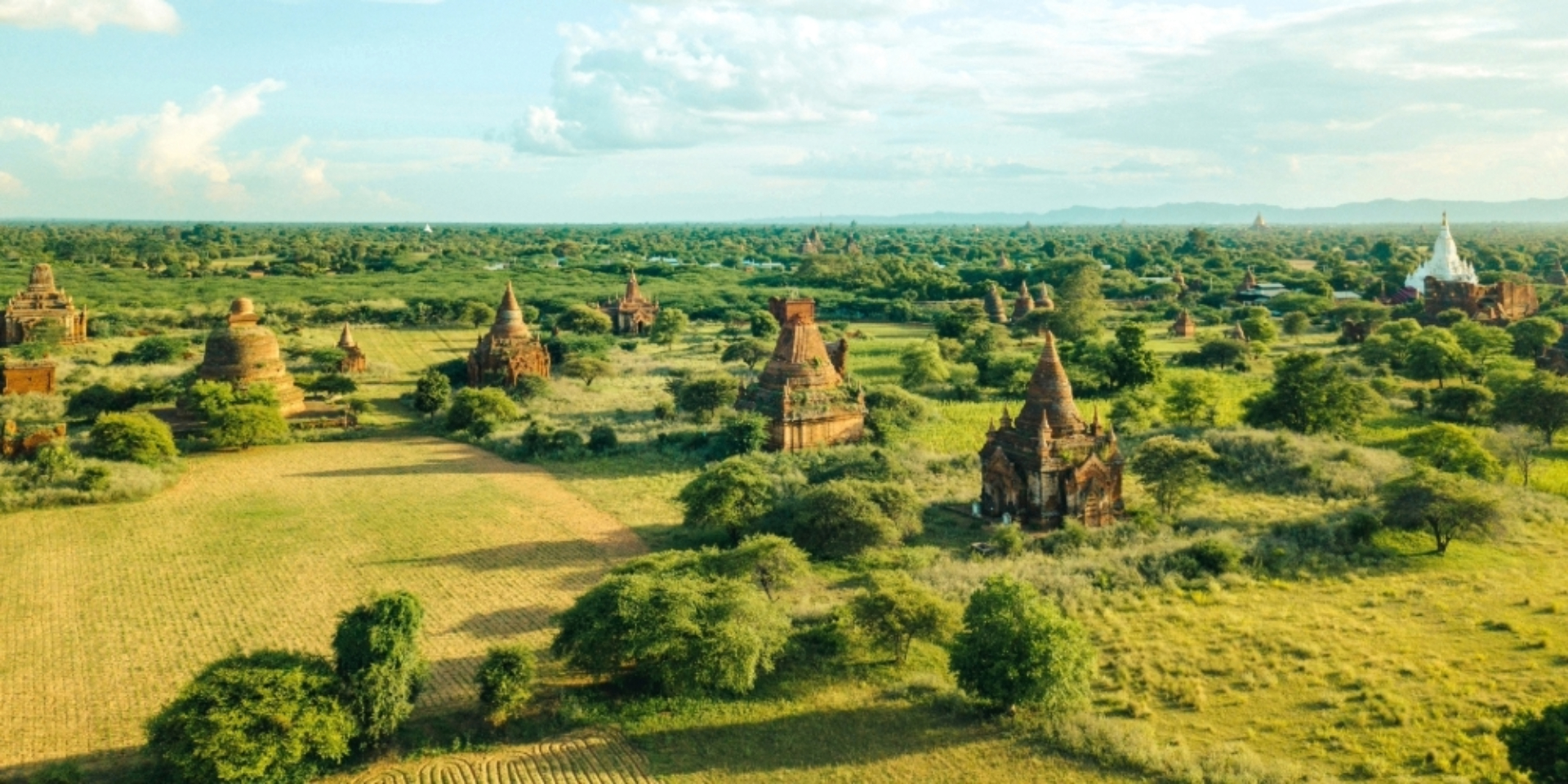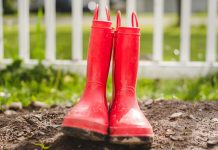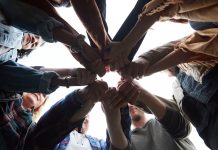Let me paint you a picture of Esther Moo’s life, one of approximately 1959 Karen refugees who migrated to Australia between 2009 and 2010.
I first met Esther at a school in South–East Queensland that we had both recently started attending. I don’t remember our first encounter; however, no doubt I thought, “Wow, she has really long hair!” as it reached past the back of her knees. I remember cultivating a deep level of amazement and respect for her later in the year when I attended a volunteer trip with some students in my grade to the place she’d called home for the previous eight years: Mae La Oon Refugee Camp.
Growing up
Esther is from the Karen people, one of the ethnic minorities of Myanmar (formerly Burma), where she was born. For more than 60 years, the Karen people have lived under what is one of the most dangerous and brutal regimes in the country’s history.
At seven months old, Esther’s parents left her and her two older siblings with their grandparents. Due to the war in Burma, they were forced to work as nurses in the army, away from their children. Esther and her siblings lived with their grandparents for the next 10 years until one day a soldier showed up at their door and took them to a couple, believed to be their parents. Esther remembers the soldier with a large gun by his side asking, “Is this your father?” Truthfully, she had no idea. She couldn’t remember what her parents looked like. “Since I didn’t grow up with them, I used to think they didn’t love me. So, I also thought, could I really be their child?”
Searching for safety
Over the next month, the family (now eight in number) journeyed through the jungle seeking refuge. They had to climb up a lot of steep terrain, cross rivers, sleep in the rain and find food to eat, like vegetables, weeds and fish.
“It was a frightening time,” Esther recalls. “The war was still happening so we would see dead bodies on the way. I was scared so sometimes my parents would carry me. But it was hard for them with lots of children.”
Eventually they reached Mae La Oon Refugee Camp, one of nine camps on the Thai-Burma border that houses approximately 15,000 people. It is a four-hour drive (in dry conditions) from the nearest town. In rainy seasons it is only accessible by boat. Most people fled to the camps in the mid-1990s after Burmese soldiers bombarded their villages. They raped, tortured, killed and abducted innocent civilians. They set fire to homes, schools and religious buildings. Fortunately, due to living with their grandparents, Esther and her siblings were protected from witnessing such horrors.
Life in the hills
Esther’s family settled high in the hills with other Christians and were later reunited with their grandparents, who in their late nineties, still reside there today.
Mae La Oon is certainly not a horrible place—at least for a short-term visitor like myself. In fact, there was something quite special and ironically peaceful about it. Lines of huts, all built from bamboo and leaves, traversed up the mountains to the sky, children entertained themselves with toys made from recycled materials and everywhere you went you found people doing life together.
But if you ask them what they think of it, they’ll tell you it’s like being in prison. The people are hemmed in by barbed wire and armed military, and due to previous attacks, they’re not allowed to leave. The space limitations mean life is overcrowded with entire families crammed into small huts. Water is not very clean, causing many people to get sick. And life is pretty well the same, day after day.
For many children, this is where they were born and where they grow up. Though nobody expected to be there so long, they hold onto hope.
During my time there I would wake up at dark each morning to many people gathered in one hut singing worship songs at the top of their lungs. When the sun rose, they would read from the Bible and share spiritual encouragement.
“Even though they had to flee their homes and had lost loved ones, they praised God to be alive and no longer facing difficulties,” Esther said. “Some people still struggle to believe that and are filled with anger for the Burmese people. They won’t even speak the same language anymore. We’d pray for them, uplift them and we’d pray for those running away, looking for safety or in the jungle.”
Esther remembers feeling relieved when they arrived at the camp and were given shelter, food and medical aid by non-government organisations (NGOs). They were even fortunate to get a few chickens and have space for a small vegetable patch behind their hut. But for many, especially now since the population has increased, this is not the case. Rations have been reduced, fewer nurses and doctors are available, children are going to school less, and there is an increasing amount of depression and violence.
A new place to call home
When Australia permitted refugees in the camp to apply for migration, Esther’s family did. The previous year, another group from my school visited her camp and Esther found herself talking with the principal who had organised the trip. He said to her, “If you ever come to Australia make sure you visit us.”
In 2009, Esther’s family was approved for migration and they boarded their first flight to Australia. They settled into a small house close to Brisbane city. The day they arrived, Esther called the principal and screamed, “We’re here!”
She said, “At first, he didn’t believe me, but then I gave him our address and he and his wife came over the next day. They showed us how to use things like a washing machine, a dishwasher, a rice cooker…” Esther stopped and laughed before she went on, “Lucky they came because when I first saw the ironing board, I thought it was a surfboard like I had seen in a movie on the plane.”
As they talked over a meal, the couple asked Esther what she wanted to do in the future. Esther replied, “I want to be a nurse.” To do so, she would need to be a graduate in Australia. The principal and his wife generously offered her a scholarship and she started year 11 at the age of 18.
“My friends in the camp laughed at me when they heard I was going back to school because I had been a teacher in the camp,” she said. “But my grandma used to pray for me and my future. She’d tell me I would be a blessing to my family. That helped me to study hard and get good marks.”
Esther was grateful for the opportunity to go to school, knowing there were thousands of aspiring students in the camps unable to complete further education. While there were makeshift jungle schools in Mae La Oon and the value of education was upheld, classes were overcrowded, resources were sparse, and there weren’t many options for students to develop past a certain point.
She found school in Australia very hard. Not only was she having to learn how to speak, read and write in English, she also had to complete assessments and exams at the same rate as other students—tasks much of my cohort seemed to complain about regularly, even without such complications.
Challenges with integration
Many things make it difficult for refugees to integrate into a new country, many of which Esther’s family experienced: adjusting to a different culture, the lack of support, and feeling isolated. With the language barrier and communication differences, it can also be challenging for them to express how they feel and what they need.
“Karen people are already very shy people,” Esther said.
Against all odds, she completed her senior high school years, got her diploma in nursing at university and started working at an aged care facility. Soon after, she met her husband, a pastor, and moved to Victoria to be with him. There she was introduced to a doctor who worked at Utopia Refugee and Asylum Seeker Health, a company that provides basic health services at no or low cost regardless of an individual’s Medicare status. This excited Esther as it meant she would be able to help her people.
How you can help
While some dream of returning to Burma when things settle, Esther says, “Australia is home now. The place where I used to live is destroyed.”
On a per capita basis, Australia has been one of the most generous countries in resettling refugees. Yet when I reflect on my own life—the abundance of food I’ve had access to, the education opportunities I’ve received, the safety of being raised in a war-less country, the stability of my parents’ finances growing up, and much more—I can’t help but feel sorry for the lack of compassion and intentionality I’ve shown to those who have moved to Australia.
When I asked Esther what people could do to help refugees adjust to their new country, she said, “Try to get to know our story and see if there is any way you can help.”
I’m inspired by Esther’s strength and positivity which reminds me that even when things don’t go as planned, to dream and smile (as she does so frequently) because there is something bigger to live for.
“I believe everything that has happened to me has had a purpose. God has had a plan for me and without His help I might not be in Australia today. I now have a husband and two beautiful girls and another coming. I have my own company. I am safe. But without God’s help, I don’t think I would be where I am today.”
Each year on June 20, the world honours the courage of those who have been forced to flee their homes to escape conflict or persecution. This year, see if there are any refugees in your area and ask yourself, “What can I do on an individual level to make them feel welcome?”



















